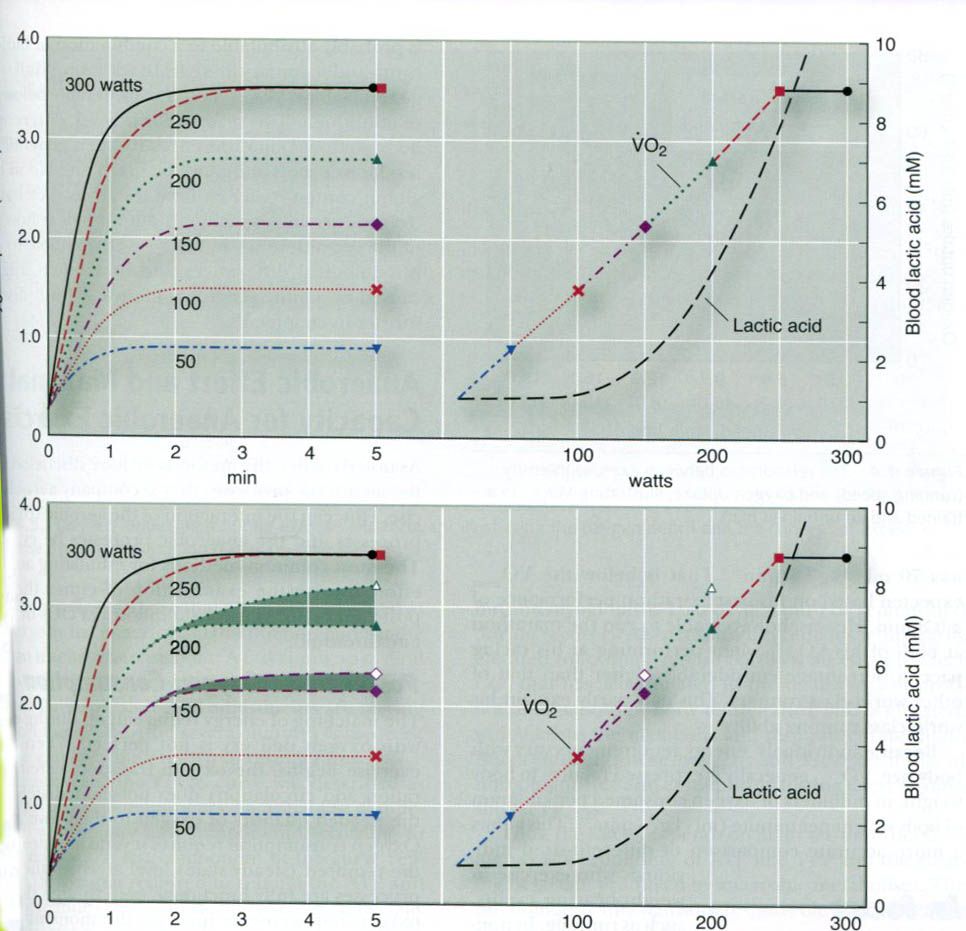From more recent studies, it is clear that the
VO2 response at higher rates of work does not follow the
steady-state response pattern shown in the figure a, but rather follows the
pattern b. It appears that at power outputs above the lactate threshold(lactate response is indicated by the dashed line
in the right half of figures a and b), the oxygen consumption continues to
increase beyond the typical 1 to 2 min needed to reach a steady-state value.
This increase has been called the slow component of oxygen uptake kinetics.
The most likely mechanism for this slow component is an alteration in muscle
fiber recruitment patterns, with the recruitment of more type II muscle fibers, which are less efficient( i.e. , they
require a higher VO2 to achieve the same power output).
A similar, but unrelated, phenomenon is
reffered to as VO2 drift. VO2
drift is defined as slow increase in VO2 during prolonged,
submaximal, constant power output exercise. Unlike the slow component, VO2
drift is observed at power outputs well below lactate threshold, and the
magnitude of the increase in VO2 drift is much less. Although not
understood completely, VO2 drift is likely attributable to an
increase in ventilation and effects of increased circulating catecholamines.










0 коментара:
Постави коментар